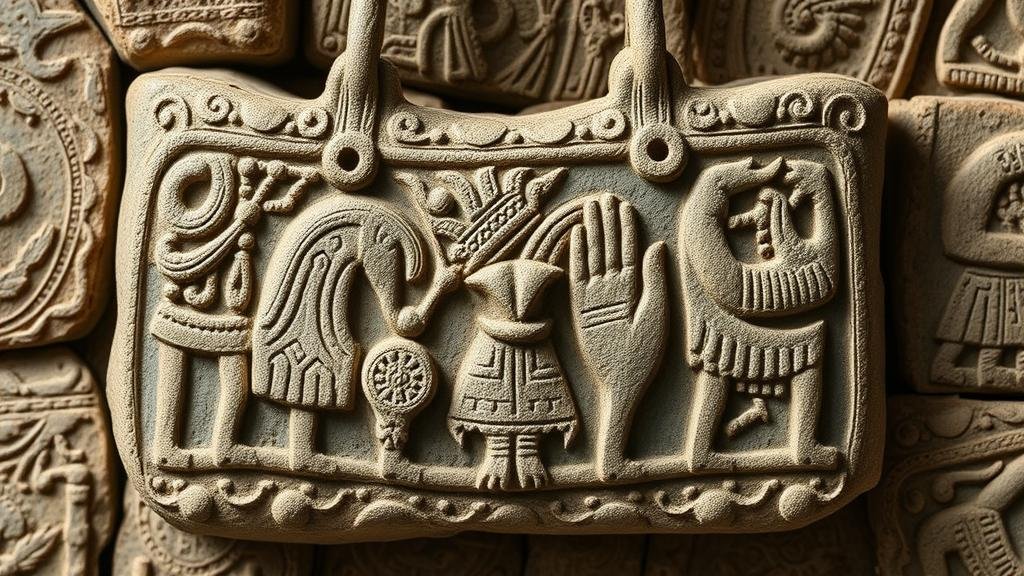Investigating the “Handbags of the Gods,” recurring motifs in ancient carvings worldwide.
Investigating the Handbags of the Gods: Recurring Motifs in Ancient Carvings Worldwide
The phrase Handbags of the Gods denotes a fascinating motif observed across diverse cultures in ancient carvings. While the exact meaning of these depictions remains a subject of debate among scholars, they consistently feature prominent figures, often associated with deities or important cultural symbols, holding objects that resemble handbags or satchels. This article explores the historical context, geographical spread, and interpretative significance of these ancient motifs.
The Origins of the Motif
Motifs resembling handbags can be traced back to ancient civilizations, including the Egyptians, Mayans, and Mesopotamians. For example, relief carvings from the 3rd millennium BCE in Mesopotamia often depict deities with parallel accessories that evoke the basic structure of bags.
In Egyptian art, from around 3000 BCE, gods such as Isis and Osiris frequently appear holding objects akin to handbags, often interpreted as representations of life, protection, or identity. The iconic reliefs found in the temples of Karnak illustrate these deities with such artifacts, suggesting deeper symbolic meanings in their context.
Geographical Spread and Chronology
The Handbags of the Gods motif is not confined to a single region but appears globally, demonstrating a shared artistic tradition rooted in human experience. Some notable examples include:
- Egypt (c. 3100 BCE): Carvings in the tombs of ancient pharaohs display gods with intricate handbags.
- Mesopotamia (c. 2600 BCE): Statues featuring deities clutching bag-like objects have been unearthed in ruins.
- Mesoamerica (c. 300 BCE – 900 CE): Mayan carvings depict figures holding objects that resemble handbags, often alongside other symbolic items.
- South Asia (c. 500 BCE): Iron Age carvings from the Indus Valley Civilization reflect similar iconography.
This geographical diversity highlights the universal nature of these symbols, suggesting that they served as conduits for expressing complex ideas about divinity, commerce, and the human condition.
Interpretative Significance
The recurring motif of the Handbags of the Gods raises essential questions concerning its symbolic interpretations. Scholars propose several theories about what these bags could represent:
- Divine Attributes: Many researchers argue that these handbags symbolize divine knowledge or power, similar to the way modern bags contain precious items.
- Commerce and Trade: The bags could represent the idea of trade goods being exchanged between the divine and mortal realms.
- Protection: In some interpretations, they are seen as protective talismans, imbued with spiritual power.
Also, analogies to everyday life help provide context. Just as a modern handbag can contain important items, ancient representations of similar artifacts may hold profound significance in their narratives, contributing to our understanding of ancient cultures.
Real-World Applications of the Study
Investigating these motifs can have several practical applications. enrich our knowledge of cultural history and inform modern art and design, illustrating how ancient symbols continue to influence contemporary aesthetics. Plus, studying these carvings enhances interdisciplinary collaborations in fields like archaeology, anthropology, and religious studies.
For example, museums often curate exhibitions that delve deeper into these themes, providing insights into the social and spiritual practices of ancient civilizations. Educational programs can utilize this knowledge to promote cross-cultural understanding, showing that despite geographical differences, humanity shares common mythological and artistic expressions.
Conclusion: Takeaways
In summary, the Handbags of the Gods motif emerges as a profound symbol with various interpretations in ancient civilizations. By examining these recurring themes across different cultures and timelines, we can uncover the layers of meaning and understanding that connect us to our past. Engaging with these artifacts encourages exploration into the complexities of human thought, spirituality, and exchange in ancient societies.
Actionable takeaways for readers include:
- Explore local museums or online exhibitions that focus on ancient civilizations to witness these motifs firsthand.
- Engage with literature on comparative mythology to enrich your understanding of similar symbols across cultures.
- Use modern interpretations of ancient symbols in personal creativity, art, or design projects.



